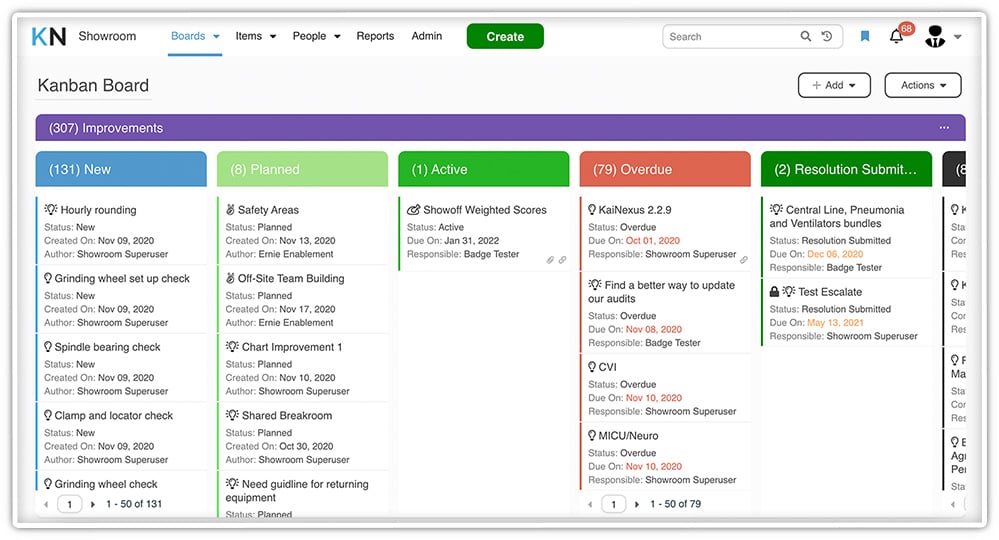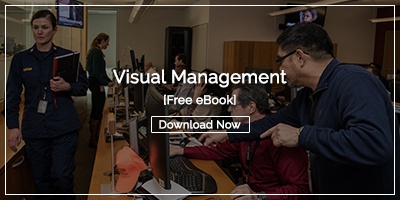 Organizations that wish to achieve operational excellence through continuous improvement execute many discrete projects to achieve this aim. The key to success is a structured approach to improvement and project management that helps every person in the organization contribute to positive change.
Organizations that wish to achieve operational excellence through continuous improvement execute many discrete projects to achieve this aim. The key to success is a structured approach to improvement and project management that helps every person in the organization contribute to positive change.
Three factors have a substantial impact on the outcome of ongoing improvement projects. The first is choosing the most suitable project management methodology. Next is leadership behaviors that support improvement. The final critical factor is digital support for project management.
Project Management Methodologies
In the modern business landscape with high expectations and short timelines, the function of project management is more critical than ever. For this reason, the Project Management Institute (PMI) projects that there will be almost 22 million new project management jobs globally by 2027.
Of course, project management is more than just overseeing a planned initiative to its conclusion. It is about having the skills and structure to take a collection of ideas or goals and understand what it will take to deliver the objective. People who oversee projects generally use one or more project management methodologies. The PMI defines a methodology as "a system of practices, techniques, procedures, and rules used by those who work in a discipline." They include the tools, techniques, principles, processes, and practices used to efficiently guide a team through the project.
There are several popular project management approaches. Which is right for your team will depend on the nature of your organization, the maturity of your project management practice, and the complexity of the specific project. Many organizations use more than one methodology to address different needs.
Lean - PDSA
The Lean business management philosophy is built around respect for people and customer value. The primary goal of lean is to deliver the maximum value to the customer with the least amount of waste. Lean improvement projects seek to identify tasks, resources, time, and motion that is unnecessary and can be eliminated. Lean organizations manage projects with the PDSA improvement cycle.
Plan: Identify the problem and form a hypothesis about a possible solution. Define key metrics for measuring success.
Do: Implement the solution in a controlled experiment.
Study: Compare the baseline and new results against the predefined metrics to determine if the experiment succeeded.
Adjust: If the results of the change are an improvement, adjust the standard work to reflect the new process. Otherwise, begin the cycle again.
Six Sigma - DMAIC
Six Sigma is a scientific approach to continuous improvement that aims to eliminate process variation. It relies heavily on control charts to monitor the health of processes and provide early warning of potential quality issues. The primary project management methodology used in Six Sigma organizations is DMAIC.
Define: Identity the problem, its impact, and the desired improved state.
Measure: Document the metrics the team will use to determine if the project has succeeded. Collect baseline measurements against these metrics.
Analyze: Assess the likely root causes of the problem to be addressed. Form ideas about which solutions should be prioritized.
Improve: Craft and implement an improvement plan.
Control: Document the improvement and set a cadence for regular review to ensure the improvement is maintained over time.
Project Management Body of Knowledge (PMBOK)
The Project Management Body of Knowledge (PMBOK) is the standard by which the Project Management Institute offers project management professional certification. Its goal is to help organizations standardize project management across all departments. It also allows project managers who move from one company to another to use the same principles and practices.
It breaks project management practices into five categories:
Initiation: During this phase, the project is defined, an owner is assigned, and the metrics for success are documented.
Planning: This phase includes the scope, risks, milestones, and budget for the project.
Executing: The proposed changes are implemented, and the project leader orchestrates all activities.
Monitoring and Controlling: Next, the results are analyzed, and steps are taken to maintain the new process.
Closing: The final phase involves getting customer acceptance, reviewing lessons learned, and celebrating success.
Leadership Behaviors for Effective Improvement
Whether you choose one of these methodologies or another, success depends on more than the project structure you choose. Project management and improvement work exist within the organization's culture and are highly influenced by its values. Leaders set the stage for collaboration and innovation. Our customers have identified several leadership behaviors that result in a healthy improvement culture.
Practice Humility
A necessary ingredient for improvement is change. Change means admitting that the current practice isn't perfect, which requires humility. The idea that "We've always done it this way" is hard to overcome, but it is essential to move past old assumptions and habits. In addition, humility means accepting that leadership doesn't have a corner on the market for ideas. The best ideas for improvement often come from front-line employees who are closer to the customers and the problems.
Embrace Incremental Improvement
The most successful leaders understand that not all positive change is revolutionary. When things aren't going well, it can be tempting to change everything all in one major initiative. However, sustained, incremental improvement is often a superior option. Small daily changes allow for more reflection, measurement, and control. This approach also makes it possible to involve more people in improvement work and demonstrate respect for employees.
Focus on Processes
It is easy and tempting to blame employees for the error when something goes wrong. But in most cases, the underlying problem is not the person; it is the process or the conditions under which they work. Blaming people prevents leaders from understanding the root cause and either improving or error-proofing the process so that any operator can do their best work. Understanding why the problem happened and how it can be prevented is far more helpful than knowing who did it.
Establish Clarity of Purpose
Organizational alignment is essential for effective continuous improvement project management. When every employee understands the organization's strategic direction and annual goals, it is easy to make decisions, resolve disagreements, and set priorities. Communicating the vision and purpose is arguably the most important responsibility of leaders, yet keeping the strategy at the top of everyone's mind is not easy. It must be done regularly and thoughtfully.
Digital Continuous Improvement Solutions
Today's leaders and project managers don't have to rely on email and spreadsheets to achieve their improvement goals. Software is available that supports any project management methodology you choose. It also helps align the organization and form a repository of knowledge to help each improvement build on the last. The best solutions include easy ways to visualize individual projects and the entire scope of improvement work. The best solutions include:
Visual Task Load and Activity Level Management
If you start from the premise that improvement is everyone's responsibility, you'll want an easy way to understand the engagement of every employee. Digital task load management allows managers to spread the workload evenly and ensure that no person is overburdened or underutilized.
Kanban View
The Kanban visualization technique can benefit all the project management methodologies we mentioned and others. Kanban breaks projects down into tasks or "cards" that move from the beginning of a project lifecycle to the end. The approach makes it easy for managers to ensure that the amount of work-in-progress is limited and flowing smoothly using a pull system. In addition, digital kanban tools allow everyone to monitor and update the kanban board wherever they happen to be.

Active Alerts and Notifications
Improvement projects often involve multiple participants, diverse stakeholders, and many activities to monitor. That's why modern improvement management solutions provide active alerts and notifications to help keep everyone informed about due dates, project milestones, and new input from team members. As a result, alerts help the project maintain forward momentum.
Clearly, continuous improvement project management is a subject that requires a lot of thought and care, but organizations that do it well put themselves in the position to outpace the competition and deliver exceptional value to customers. Our team is happy to chat about how KaiNexus might be able to help you on your path to excellence.
![[Watch Now] The Why, How, and What of Continuous Improvement](https://no-cache.hubspot.com/cta/default/326641/060c8cc9-44ad-4fd1-ad7b-7b4ab71c7632.png)



Add a Comment